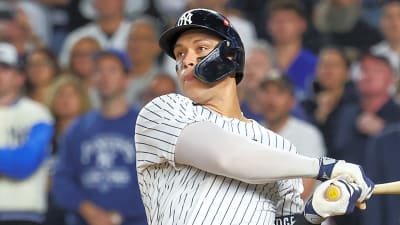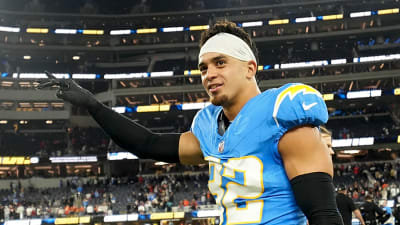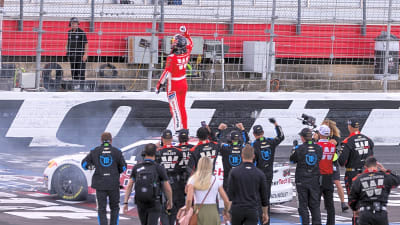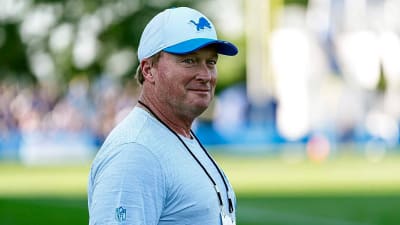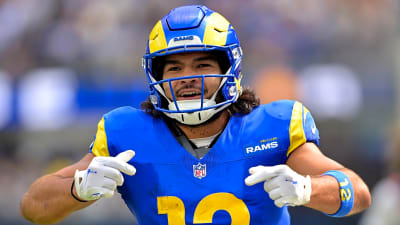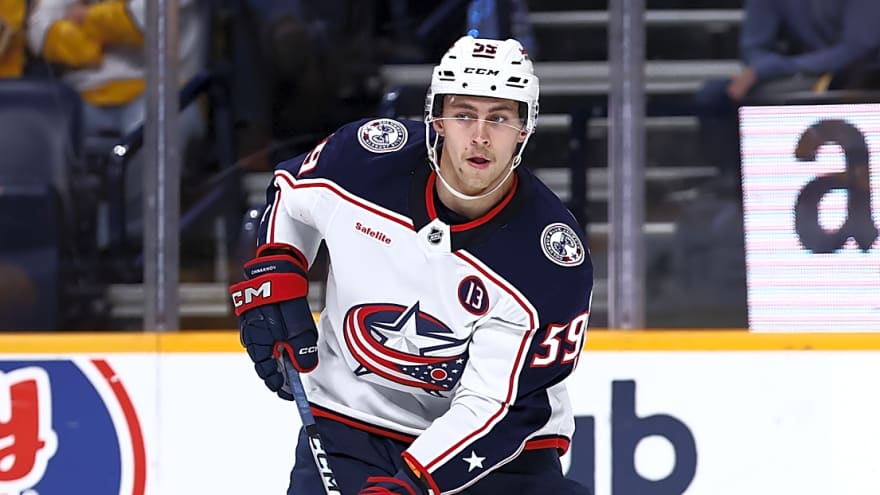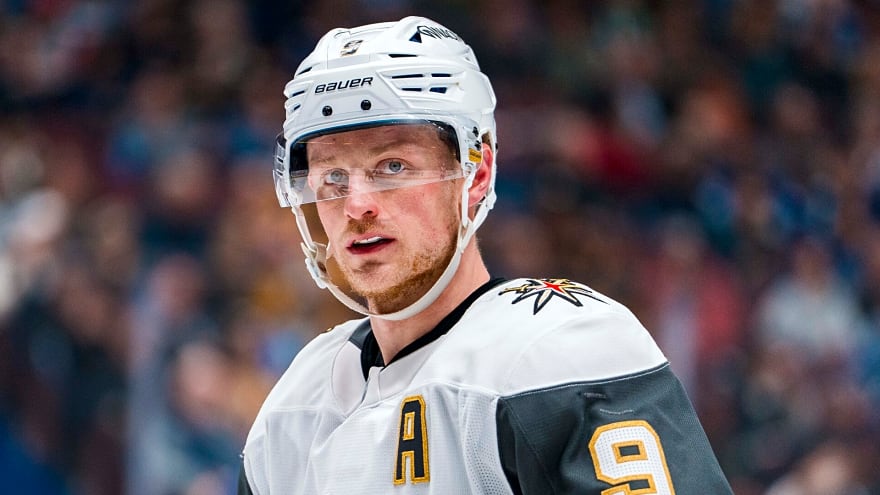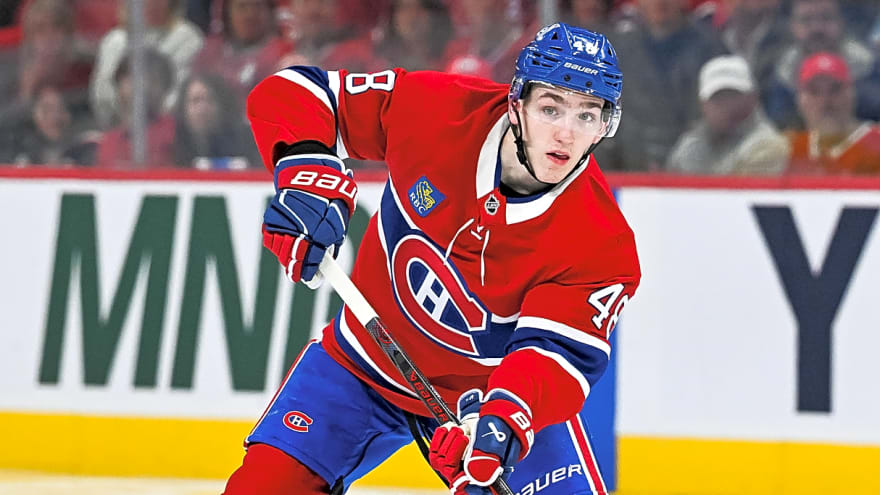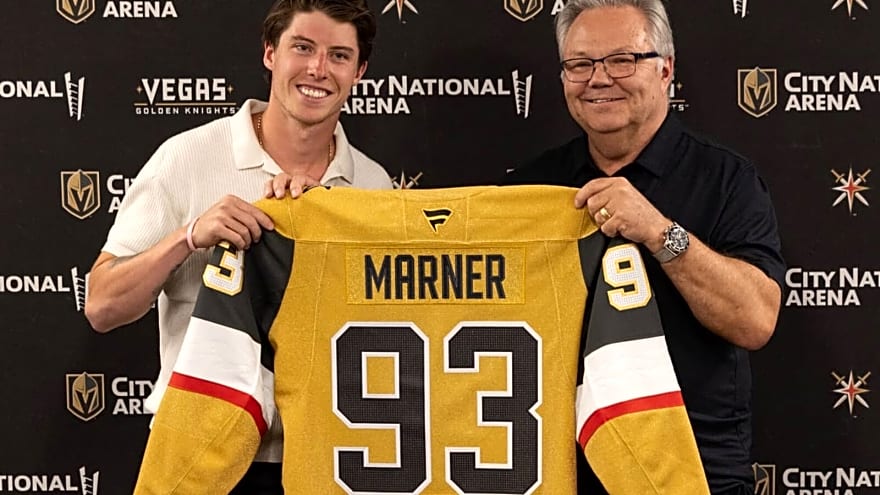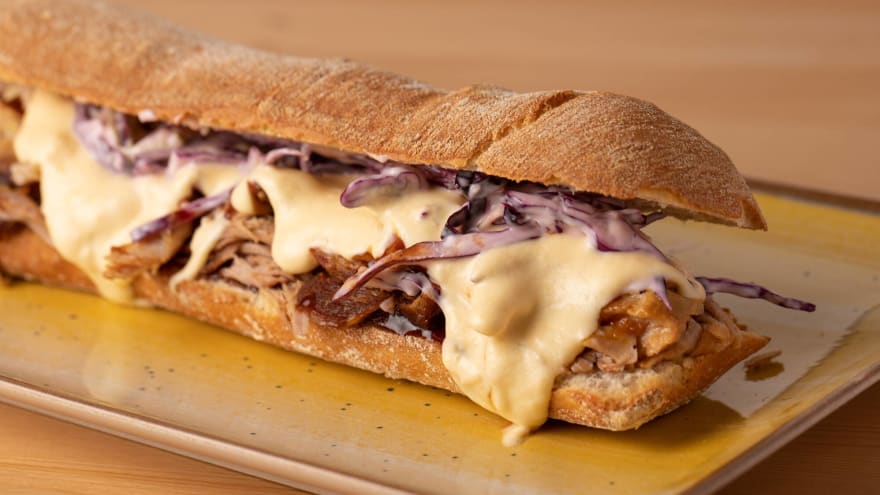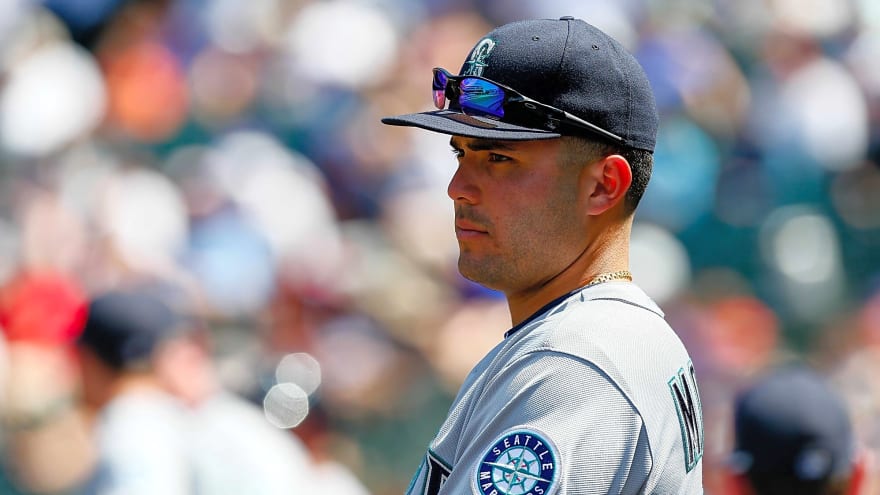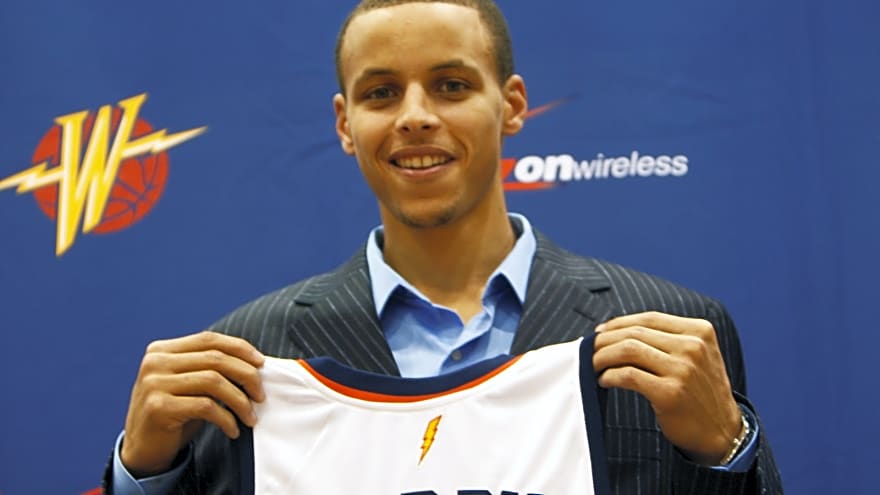
The New Jersey Devils are trailing the Carolina Hurricanes 2-0 in the best-of-seven series after a Game 2 loss by a score of 3-1. This was after a 4-1 loss to the Hurricanes in Game 1 of the series on Sunday. While the Devils showed that bounce-back ability, it wasn’t enough as the New Jersey Devils special teams once again cost the team.
“Special teams are the difference,” head coach Sheldon Keefe told the media after Game 2 on Tuesday. “We knew coming into this series our power play has been our edge all season long and it was going to be a real challenge for us going up against this penalty kill and it could be a big factor in the series and it’s really what, in a lot of ways, been the story in the first two games.”
The New Jersey Devils had the third-best power play in the NHL, operating at a 28.2% success rate during the regular season. This was a unit from March 2nd, 2025, that did not have Jack Hughes on its top power-play unit. Jack Hughes was lost for the season after having shoulder surgery. Not to mention, Dougie Hamilton was out from March 4th, 2025, to April 16th, 2025, with a lower-body injury.
Players like Timo Meier, Jesper Bratt, Nico Hischier, and Luke Hughes really stepped up their games. Not to mention having Stefan Noesen in front of the net made a difference. There were stretches during the season when the unit fell flat. And this is where the Devils needed to find goals in this series if they wanted to win.
New Jersey Devils: New Jersey Devils Are Ready For What Carolina Will Bring
Vancouver Canucks: NHL Rumors: Could Quinn Hughes Be on the Move?
Ottawa Senators: Ottawa Senators Have No Time to “Panic” After a Tough OT Loss
Montreal Canadiens: Montreal Canadiens Are Stanley Cup Playoff Bound
Entering the series, the New Jersey Devils needed to average two to three goals a game. Some of those goals, as discussed on the Full Press NHL Podcast with Mike Morreale, needed to come on special teams, either on the power play or on the penalty. Neither of which has happened. The Devils have two goals in the series, both at even strength.
Jim Biringer: “And as you mentioned before, can you get two to three goals? And maybe one of those goals, or two of those goals, are either a power play goal or a short-handed goal, like a special teams goal. That’ll change momentum in a game for you.”
Mike Morreale: “You make a legitimate point there as far as special teams goes, Look, Carolina hasn’t done well on the power play this year. I think they’re in the bottom third, if I’m not mistaken, a little over 18% and the Devils have 10 shorthanded goals, obviously, seven shorthanded goals this year, so maybe that’s an area, as you said, that they could take advantage of. It seems crazy to think that you could take advantage of a Carolina power play, but hey, if you have a Jesper Bratt out there. You got a Nico, you have a chance. And now (Brenden) Dillon has played well, so yeah, I mean, you’ve got to strike however you can. And obviously the Devils power play, we know it has been clicking this year, and special teams are going to be big. They’re going to have to win the special teams battle to have any chance here.”
Through two games in the series, the Devils power play is 0-for-5, and they gave up a short-handed goal in Game 2 that was the difference. Meanwhile, the Hurricanes’ power play is 1-for-6, with a power-play goal in Game 1. Again, that was the difference in Game 1. So, as predicted, special teams was going to play a role.
“I mean, obviously, them scoring shorthand is obviously a game changer,” Jesper Bratt said post-game.
There’s a reason why the Hurricanes’ penalty kill is operating at an 83.6 percent success rate. The Devils are second, operating at a success rate of 82.7 percent. So it was going to be hard for both power-play units to score goals. And the Hurricanes have a goal on each side of the ledger, with the Devils having zero.
In five power play attempts in the series, the Devils have seven shots on five power play attempts and only one shot in two power play attempts in Game 1. That is not going to cut it against a team like Carolina. Logan Stankoven scored the power-play marker for the Canes in Game 1. It was Jordan Martinook who scored the shorthanded marker against the Devils in Game 2.
“But a short-handed goal. That is a killer. Can’t give that up,” Keefe continued post-game.
Special teams is an area the New Jersey Devils need to improve on, as Brett Pesce said after the game on Tuesday.
“It hurts our special teams. We lost the best special-teams battle two times in a row, and in the playoffs. And playoffs,” Brett Pesce said to the media. “The game is so tight five-on-five. You need our special teams to come up big. Penalty and power play, and we lose the game arguably because of that.”
The New Jersey Devils special teams, especially the power play, are going to have to find a way to break down a very good, aggressive, and defensive penalty kill unit as the series shifts back to New Jersey for Games 3 and 4.
If the New Jersey Devils can flip the script on special teams, they have a chance to take a game or two in the series. But the key will be taking Frederik Andersen‘s eyes away from him. But that will be a challenge considering how good the unit for Carolina is.
Game 3 is set for Friday Night, 8 pm ET at Prudential Center.
Of Note: The New Jersey Devils were playing without Brenden Dillon, Luke Hughes, Cody Glass, and Jonas Siegenthaler. Not to mention Jack Hughes. Not having Dillon or Luke Hughes for the special-teams battle really hurts. Glass, Dillon, and Luke Hughes were all injured in Game 1.
More must-reads:
- 13-year NHL veteran announces retirement
- Jets extend star left winger on eight-year deal
- The 'Most NFL QB two-rushing-TD games' quiz
Breaking News
Trending News
Customize Your Newsletter
 +
+
Get the latest news and rumors, customized to your favorite sports and teams. Emailed daily. Always free!
TODAY'S BEST
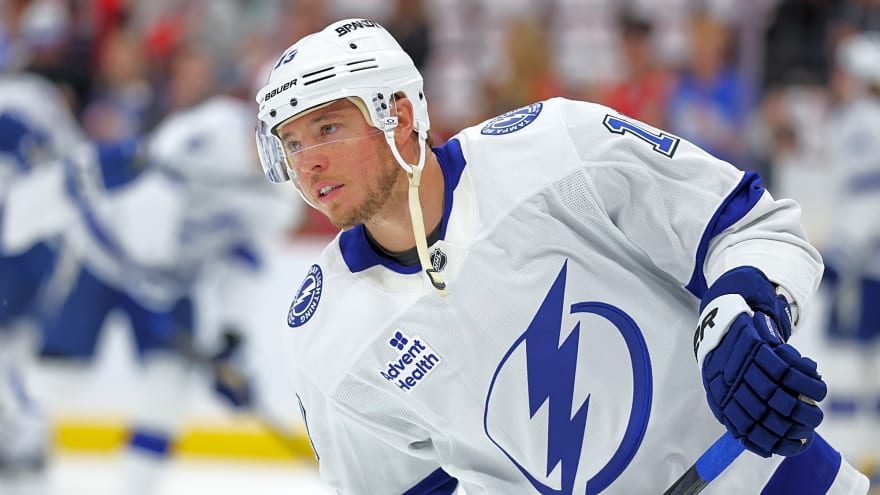
13-year NHL veteran announces retirement
After a 13-season NHL career, veteran winger Cam Atkinson is hanging up his skates. The Blue Jackets announced Wednesday that they’ll be signing him to a one-day contract and will officially honor his retirement on Oct. 16 against the Avalanche. He’s expected to join Columbus in a front-office capacity at some point down the road, but that announcement won’t be coming now, he told Aaron Portzline of The Athletic. Atkinson is one of the better draft steals in Blue Jackets franchise history, coming to them in the sixth round in 2008. He signed with Columbus three years later after a great run at Boston College and made his NHL debut in 2011-12, although it took him another two years to fully establish himself on the active roster. After going up and down between Columbus and AHL Springfield, Atkinson broke out into a top-six role for the 2013-14 season. He finished third on the team with 21 goals and fourth with 40 points in 79 appearances, helping fuel the Jackets to a then-franchise record 43-win season that resulted in their second-ever playoff appearance. The undersized but skilled Atkinson remained a fixture in Columbus’s top six for the balance of the decade. He was a two-time All-Star, including his career-best 41-goal, 69-point effort in 2018-19 — leading the team in goals in the year they orchestrated one of the most drastic upsets in league history by sweeping the Presidents’ Trophy-winning Lightning in the first round for their first series win in franchise history. After the COVID-shortened 2021 season, Atkinson had totaled a 213-189-402 scoring line in 627 games for Columbus, still holding up as the second-leading goalscorer and point-getter in the Jackets’ record books behind Rick Nash. After Atkinson’s points per game production peaked at 0.86 in that career year, he only managed to produce at about a 0.60 pace over the next two years. That soft decline led Columbus to ship Atkinson to the Flyers in the 2021 offseason in a one-for-one swap for Jakub Voráček. In hindsight, it turned out to be a bit of a lose-lose endeavor. Atkinson seemed to pop back into form with a 23-27–50 effort in 73 games in 2021-22, but a neck injury sustained in the following training camp ended up costing him the entire 2022-23 season and accelerating his decline. He had just 28 points in 70 games for Philly upon returning to play in 2023-24, leading the club to buy out the final year of the seven-year, $41.13M extension he signed with Columbus back in 2017. Atkinson became an unrestricted free agent a year ahead of schedule and signed on with the Lightning on a one-year deal worth $900K. The bounceback he was looking for never came, though. He struggled to stick in the lineup and played sparingly when he did dress, averaging just nine minutes per game across 39 contests. After finishing the year with a 4-5-9 scoring line, the Lightning were quick to say Atkinson wouldn’t be brought back. Atkinson told Portzline that he received professional tryout offers this summer but declined them, saying he essentially made up his mind when he made his final regular-season appearance for Tampa. He ends his career with a 253-236-489 scoring line in 809 appearances, including a -11 rating while averaging north of 17 minutes per game. We at Pro Hockey Rumors congratulate Atkinson on a lengthy and successful pro career and wish him the best in whatever comes next.
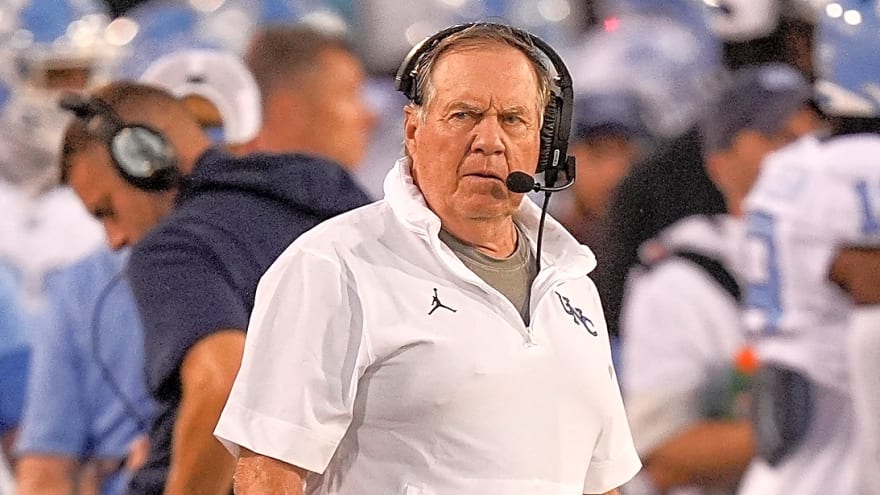
North Carolina reportedly considering nuclear option with Bill Belichick, and that's justified

Officiating Crew For Steelers-Browns Game Gives 1 Team Clear Advantage
The Pittsburgh Steelers have been dominant against the Cleveland Browns under Head Coach Mike Tomlin. However, an AFC North contest coming off a bye week is never something Steelers fans overlook. With the Browns sitting at 1-4 and the Steelers at 3-1, a victory in this matchup is pivotal for Pittsburgh to start AFC North play on the right foot. The Steelers are looking to carry momentum from a strong start to the season, and continuing their winning ways against a divisional rival would set a positive tone for the months ahead. The Browns will be starting rookie quarterback Dillon Gabriel, who will be making just his second-ever NFL start. The Steelers' defense will look to make life extremely difficult for the rookie on Sunday. One area that is always important in these matchups is the officiating crew. According to NFL Ref Stats, the Steelers appear to have a significant advantage in this contest against the Browns. Historically, Pittsburgh has fared well under certain officiating crews, particularly those with tendencies that favor defensive schemes and physical play at the line of scrimmage. This statistical edge may not guarantee a win, but it certainly provides a subtle advantage that could tip critical calls in Pittsburgh’s favor during a tightly contested game. Beyond the numbers, the Steelers will need to execute clean football on both sides of the ball. Protecting the quarterback, establishing the run, and maintaining discipline on defense will be key to neutralizing Cleveland’s biggest playmakers. While the Browns are struggling this season, divisional games often bring out unexpected performances, making preparation and focus essential. If Pittsburgh can combine their historical dominance, officiating edge, and disciplined execution, they have a strong chance to assert control early in AFC North play and keep their division hopes alive. Ron Torbert will serve as the officiating head for this contest, and the numbers clearly favor the Steelers. In games Torbert has officiated, Pittsburgh has gone an impressive 10-1, showing a consistent trend of success under his oversight. Even more striking, the Steelers are a perfect 8-0 at home in games where Torbert is the head referee, highlighting a significant home-field advantage when he is on the crew. Steelers Should Have Edge In Week 6 Against Browns Expect the officials to focus heavily on offensive penalties, as Torbert has a reputation for calling more infractions on the offense than the defense. According to NFL Ref Stats, he assesses 52.5% of all penalties against the offense, ranking fourth in the league for offensive penalties per game. This suggests that both teams will need to maintain discipline, but it could particularly benefit Pittsburgh, a team built around physical play and disciplined execution. For the Steelers, this officiating angle could be an advantage they can capitalize on, especially early in the game. By staying sharp and minimizing mistakes, Pittsburgh can force Cleveland into difficult situations while maintaining momentum. With Torbert on the field, the historical trends and penalty tendencies both point to a scenario where the Steelers have an extra edge in controlling the pace and flow of this crucial AFC North matchup. The Steelers sit as -200 favorites in this contest and it seems like a lot is on their side.

49ers’ Kyle Shanahan Reveals George Kittle Development Amid NFL Season
Six-time Pro Bowl tight end George Kittle’s 2025 season for the San Francisco 49ers got off to a problematic start. The former Iowa Hawkeyes star, who produced 78 receptions for 1,106 yards and eight touchdowns last season, suffered a hamstring injury in the Niners’ season-opening win against the Seattle Seahawks and has since missed his team’s last four games. After undergoing an MRI on his hamstring, it was determined that it was going to be a multi-week injury for the two-time All-Pro TE. This forced the 49ers to place Kittle on injured reserve, meaning he would miss at least four weeks. Niners head coach Kyle Shanahan, however, revealed some good news on the Kittle front on Wednesday. Kittle has already been ruled out for Sunday’s game against Baker Mayfield and the Tampa Bay Buccaneers, but according to Shanahan, Kittle has a chance to return for San Francisco’s Week 7 matchup against the Atlanta Falcons (h/t Niners reporter David Lombardi of The San Francisco Standard). This is a crucial development for Kittle, who appears to be on track to make his comeback after five missed games. For the 49ers, Kittle’s imminent return boosts the team’s passing game as an added target, as well as providing elite in-line blocking against edge rushers. This news also comes at an ideal time for San Francisco as it continues to deal with multiple injuries to its star players. Quarterback Brock Purdy (toe), wide receiver Ricky Pearsall (knee), WR Jauan Jennings (ankle/rib) and WR Brandon Aiyuk (knee) are all still on the mend, while the Niners recently lost defensive end Nick Bosa to a season-ending ACL tear. Kittle’s return should serve as a psychological boost for the Niners as they try to continue building on their strong 4-1 start to the season.

Who Is Bradford M. Freeman? All About $50M Stanford Donor’s Football Career Before & With the Cardinal
Stanford football just got a massive lifeline, and it’s coming from someone who knows exactly what it’s like to suit up for the Cardinal. Bradford M. Freeman, a 1964 graduate who came to Palo Alto on a football scholarship six decades ago, just dropped $50 million on his alma mater’s struggling football program, the biggest individual gift in Stanford football history. President Jonathan Levin didn’t mince words about what this means: “This is a game-changing gift for Stanford. It will help us to recruit top talent and compete at the highest level. Brad’s generosity and commitment to football will benefit our entire athletics department, as excellence in football will support success across all 36 varsity sports.” General manager Andrew Luck called the donation a “bridge to a sustainable future,” and it could not have come at a better time. Stanford is trying hard to navigate the modern football reality, which is marred by NIL and direct payments to student-athletes. The money donated by Freeman would be of massive help in funding institutional NIL support and will also help in creating five new football scholarships. Who Is Bradford M. Freeman? Freeman isn’t just another wealthy alum writing checks—he’s been Stanford’s most loyal football benefactor for nearly 40 years. Born and raised in Fargo, North Dakota, he was a star high school football player who earned a scholarship to Stanford, graduated in 1964 with an economics degree, and then headed to Harvard Business School for his MBA. Freeman is not your regular donor. He has been Stanford’s most loyal football benefactor for nearly 40 years now. He was born and raised in Fargo, North Dakota, and was a star high school football player who earned a scholarship to Stanford. He graduated in 1694 with an economics degree and then went on to do an MBA from Harvard Business School. In 1983, he co-founded Freeman Spogli Co., a private equity investment firm, with his longtime friend and business partner Ron Spogli, who also went to Stanford (class of 1970). Freeman’s philanthropic footprint at Stanford is enormous; he served 10 years on the Board of Trustees starting in 1995, and in 2005, he and Spogli jointly donated $50 million to endow the Freeman Spogli Institute for International Studies, Stanford’s hub for international affairs research. His giving has touched everything from undergraduate education and fellowships to professorships and the Bing Overseas Studies Program. “I remain grateful for the opportunities that my Stanford football scholarship gave me and for all the ways that the university impacted the trajectory of my life,” Freeman said about his latest gift. All About His Football Career Here’s the funny thing about Freeman’s football career at Stanford: he barely played. Despite being a high school standout in North Dakota, his Cardinal career didn’t exactly light up the stat sheet. In a brutally honest 2014 interview, Freeman joked, “I went from outstanding player of the year to setting a record at Stanford for the most minutes not played in four years.” But that lack of playing time did not impact the love he had in his heart for his alma mater at all. Even though he spent most of his football journey with the Cardinals on the bench, that football scholarship opened doors that changed the trajectory of his life. After his education, he went on to build a private equity empire. This is how college athletics shape a player’s career. Football was an option, but due to Stanford’s quality education, it wasn’t the only option, and now the institution is reaping the rewards of its hard work. What Does Freeman Do Now? These days, Freeman is a private equity titan and one of Stanford’s most influential donors, though he’s clearly never stopped being a football fan at heart. As general partner of Freeman Spogli Co., the firm he co-founded more than 40 years ago, he’s built a successful investment banking career that’s given him the resources to give back in extraordinary ways. His commitment to Stanford football dates back to 1988, when he endowed the nation’s first head coaching position, the Bradford M. Freeman Director of Football, currently held by interim coach Frank Reich. That groundbreaking move helped inspire the endowment of other coaching positions across all 36 of Stanford’s varsity sports. Stanford will honor his latest gift by naming the tunnel where players and coaches enter Stanford Stadium as the Bradford M. Freeman Tunnel and naming a gate the Bradford M. Freeman Gate. He’ll also be recognized as one of six Trailblazer honorees in Stanford’s Home of Champions. Freeman’s hope is simple but ambitious: “I hope my gift will herald a new era of excellence for Stanford football and help the university address the new financial demands of competitive college athletics.” For a program that’s gone 3-9 in each of the past four seasons and is desperately trying to recapture its 2010s glory under Harbaugh and Shaw, Freeman’s $50 million might just be the game-changer they need.

